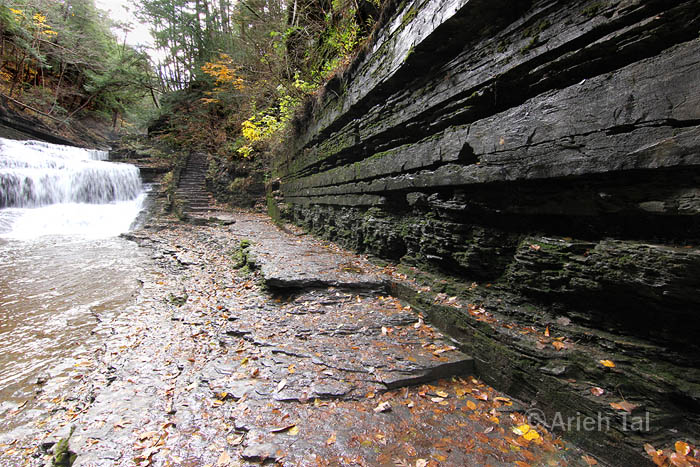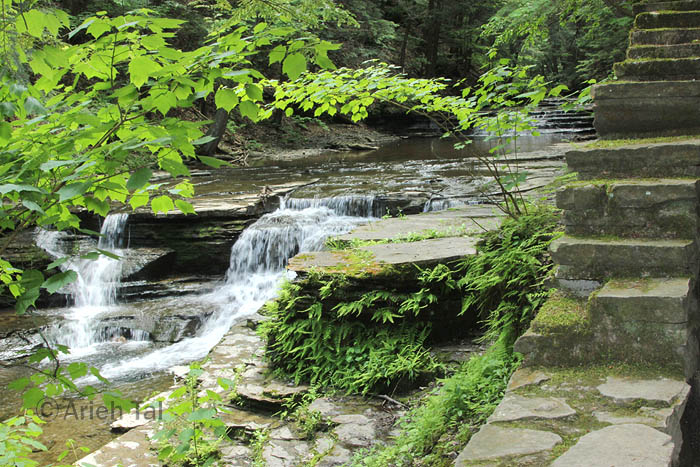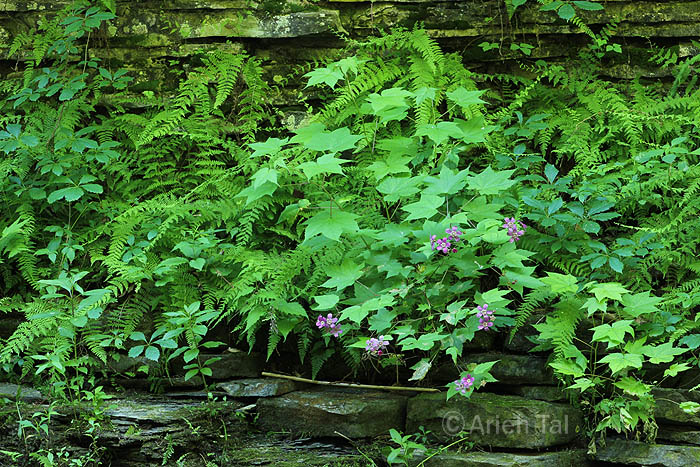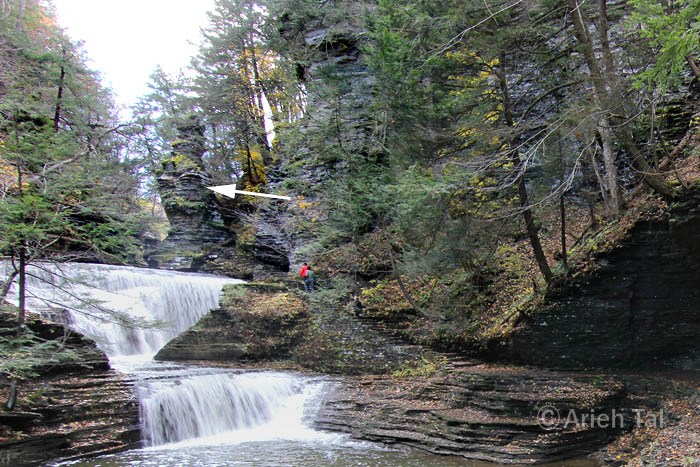|
|
||
| x Figure A. Damp ledges and gorge trail along Buttermilk Creek, November 2018. . |
||
| Assuming
that a hiker follows the gorge trail from its lower entrance below the
falls, the "Highlands
Wet" subsection of the gorge trail begins at the point at
which the gorge trail descends from a dry-mesic
woodland, to reconnect with Buttermilk Creek at water level. Most
of this subsection passes through relatively dark, mesic,
rich woods, dominated by eastern hemlock*, yellow birch, red oak,
basswood and white ash. Occasionally, one may also find a mature
tulip tree, sugar maple, red maple, eastern sycamore or big-toothed
aspen.
This subsection is largely dark, damp and cool. Water often seeps off adjacent ledges, draped with bulblet bladder ferns*, clearweed, wood-nettle, and various mosses, lichens and liverworts. The footing is often wet or at least damp. The primary understory trees here are hop hornbeam and mountain maple, which are fairly prevalent throughout the gorge trail. The most common shrub is witch hazel. On the north side of the creek eastern hemlocks dominate, from above the rim trail down to water's edge. This subsection of Buttermilk Creek is very ferny, particularly of one species: bulblet bladder fern. |



